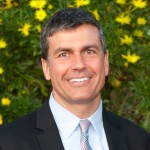One central theme of Investing in What Works for America’s Communities is that successful interventions to revitalize communities have to be cross-sector—coordinating interventions from education, health, transportation, job training, and others—to be more effective. It’s similar to immunizations given to children; many are administered simultaneously or as a series, but if they are given as one-offs, they are no more effective than doing nothing at all. Cross-sector work is hard under any circumstance, but it may be harder in the suburbs where social service agencies have fewer resources, according to Elizabeth Kneebone and Alan Berube in Confronting Suburban Poverty in America.
Elizabeth Kneebone and I recently presented on these themes in Saint Louis on “Stay Tuned,” a television series produced by Nine Network, a PBS affiliate. While the challenges may be great, several presenters in this episode explored how progress is possible by using community quarterbacks like Beyond Housing to coordinate interventions, using data to identify hot spots of greatest need, and using schools as an operational base to provide services for students and their parents.
To learn more about a cross-sector approach to community development, read Investing in What Works for America’s Communities and Collective Action for Community Development (Community Investments, Volume 26, Issue 1).
The views expressed here do not necessarily reflect the views of the management of the Federal Reserve Bank of San Francisco or of the Board of Governors of the Federal Reserve System.
